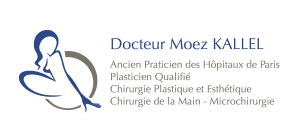DEFINITION :
Mammary hypoplasia is defined as a breast volume which is insufficiently developed in proportion to the patient’s morphology. It can be a pre-existing condition (small breasts from puberty) or appear later, after substantial weight-loss, a pregnancy followed by breast-feeding, or hormonal problems. It can occur alone or be associated with ptosis, that is sagging of the breasts .
In some cases, it is now possible to increase or restore the breast volume by fat transfer. This technique was initially developed in reconstructive breast surgery where it has made considerable progress.
It is derived from the fat transfer technique performed at the region of the face, which is also called lipostructure or lipolling or lipofilling.
In addition, modern fat grafting techniques allow a harmonious distribution of adipocyte grafts, hence decreasing the risk of oily cyst formation or poor grip (cytostecnosectic) formation.
It should be emphasized that this technique can not be performed in all cases of breast augmentation surgery. The implants keep their place in the therapeutic arsenal.
Hence, this kind of surgery has different aims :
- Implant breast augmentation is suitable for patients who wish to have breasts with more volume and to have a radical transformation of their breasts.
- Aesthetic lipofilling of the breasts only allows a moderate augmentation and is better suited for patients who want to regain a “previous state” (after weight loss, pregnancy, breastfeeding) and / or desire a more “natural” solution, without a prosthetic foreign body. Moreover, this technique is only possible if the patient has a sufficient fat-donor site.
THIS TECHNIQUE HAS TWO MAIN ADVANTAGES :
- It allows a breast augmentation in terms of volume, although moderate, but completely natural, without foreign body, and not giving the appearance of an artificial breast.
- It allows possible treatment at the same time of any disharmonious localized excess load of fat (fat extraction site)
BEFORE THE OPERATION :
The therapeutic choice will be determined wity a common agreement by the surgeon and the patient.
A pre-operative assessment is performed in accordance with the usual requirements.
The anaesthetist will be seen for consultation before surgery.
No medication containing aspirin or anti-inflammatory should be taken within 15 days preceding the intervention.
TYPE OF ANAESTHESIA AND HOSPITAL STAY
Type of anaesthesia
Aesthetic breast lipofilling usually requires general anaesthesia.
Hospital stay
This surgery requires a stay in hospital for 1 to 2 days.
THE OPERATION :
Each surgeon adopts his/her own technique that adapts to each case to obtain the best results. However, there are some common basic principles :
The surgeon begins by accurately identifying the sites from which he will extract the fat, as well as the recipient sites
The atraumatic fat extraction is carried out by small incisions hidden in the natural folds by means of a fine suction cannula.
Fat transfer is made from incisions of 1 to 2 mm using micro-cannulas.
Since it is a case of transplant of living cells (whose intake is estimated at 60 to 70% according to the patients), the grafted cells will remain alive. Aesthetic lipofilling is therefore a permanent technique.
AFTER THE OPERATION: POSTOPERATIVE CARE AND FOLLOW-UP
Pain is usually mild.
Swelling (edema) in extraction sites and in the breasts are observed for the 48 hours following the surgery and usually need 1 to 3 months to fade.
Bruises appear during the first hours in the site extraction : they usually fade 10 to 20 days after the surgery.
The regions operated should not be exposed to the sun or the U.V before 4 weeks at least. The result begins to appear within 1 month after the intervention, but the result close to the final result requires 3 to 6 months.
THE RESULT :
The result can not be appreciated before 3 to 6 months after surgery: the operated breasts generally have a bigger volume and a more harmonious curve. The silhouette is also improved thanks to the liposuction of the extraction areas (hips, abdomen, breeches, knees).
A second session of lipofilling is possible a few months later if necessary.
